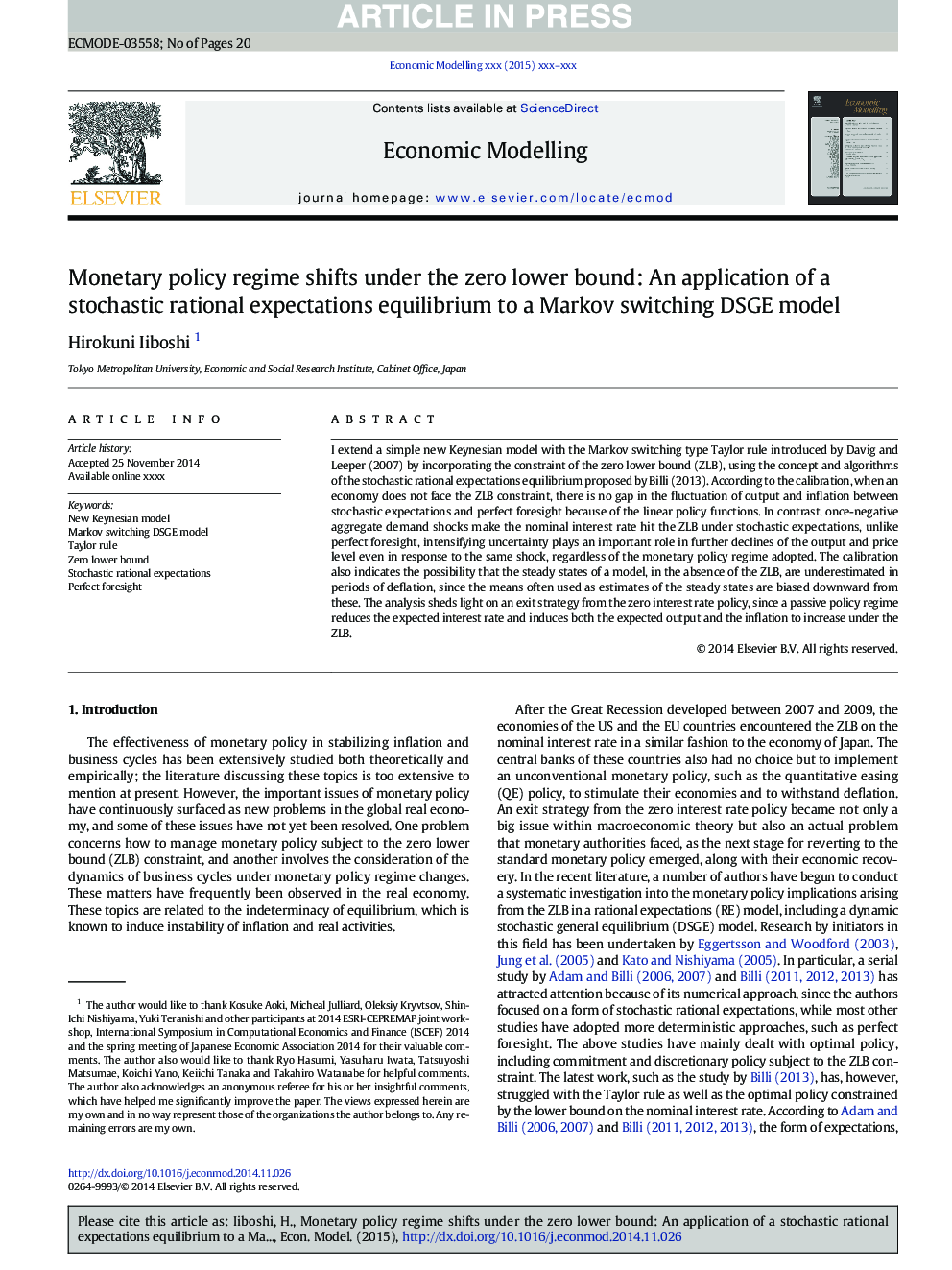| Article ID | Journal | Published Year | Pages | File Type |
|---|---|---|---|---|
| 5053534 | Economic Modelling | 2016 | 20 Pages |
Abstract
I extend a simple new Keynesian model with the Markov switching type Taylor rule introduced by Davig and Leeper (2007) by incorporating the constraint of the zero lower bound (ZLB), using the concept and algorithms of the stochastic rational expectations equilibrium proposed by Billi (2013). According to the calibration, when an economy does not face the ZLB constraint, there is no gap in the fluctuation of output and inflation between stochastic expectations and perfect foresight because of the linear policy functions. In contrast, once-negative aggregate demand shocks make the nominal interest rate hit the ZLB under stochastic expectations, unlike perfect foresight, intensifying uncertainty plays an important role in further declines of the output and price level even in response to the same shock, regardless of the monetary policy regime adopted. The calibration also indicates the possibility that the steady states of a model, in the absence of the ZLB, are underestimated in periods of deflation, since the means often used as estimates of the steady states are biased downward from these. The analysis sheds light on an exit strategy from the zero interest rate policy, since a passive policy regime reduces the expected interest rate and induces both the expected output and the inflation to increase under the ZLB.
Related Topics
Social Sciences and Humanities
Economics, Econometrics and Finance
Economics and Econometrics
Authors
Hirokuni Iiboshi,
